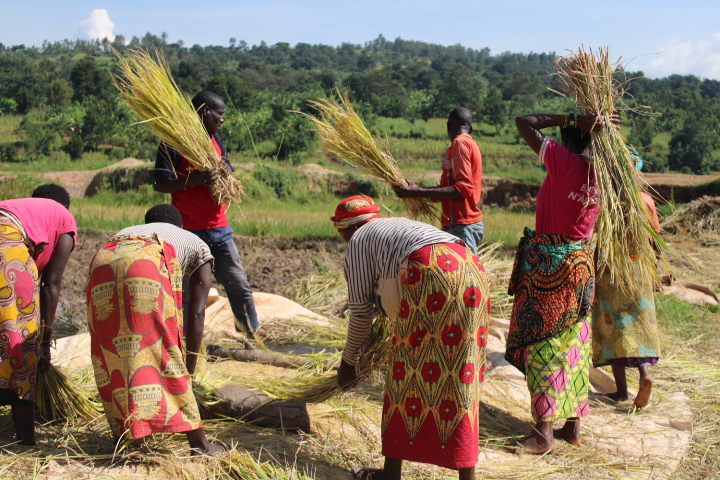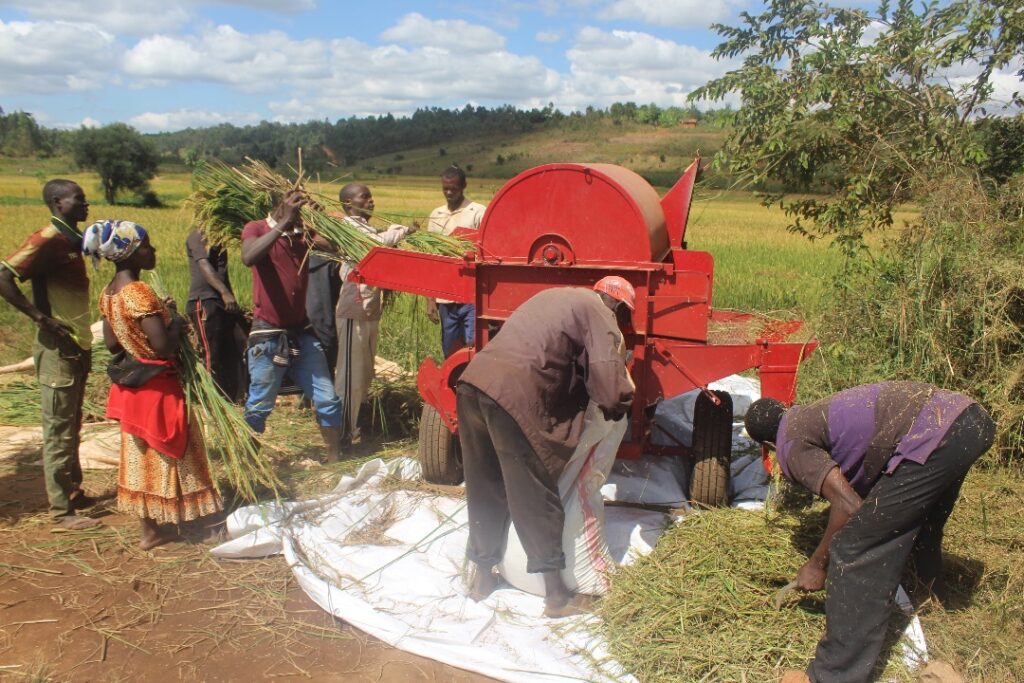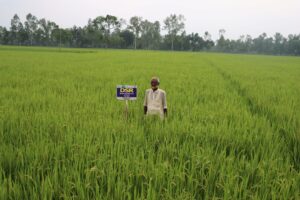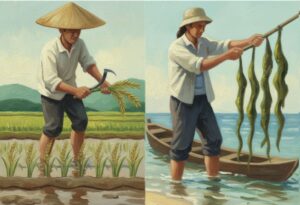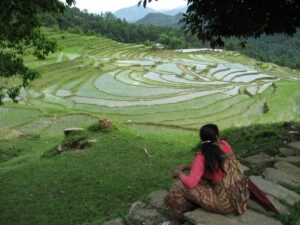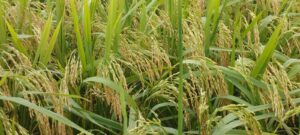by Melanie Connor, Alexis Ndayiragije, Joseph Bigirimana
The Republic of Burundi lies in the center of East Africa and has emerged as a pivotal player in advancing regional food security through the strategic activities of the International Rice Research Institute (IRRI). Since the establishment of the IRRI Regional Crop Improvement Hub in Bujumbura in 2013, it has become a center of excellence for rice research, breeding, pathology, agronomy, and training. It has generated about 12 million cumulative project funding from 2013 to 2024. Over the years, it has expanded its infrastructure and now owns laboratories, greenhouses, disease screening facilities, and mechanization equipment.
In 2018, IRRI signed a host country agreement with the Government of Burundi, which enabled the formal establishment of the hub and solidified IRRI’s legal and operational presence not only in the country but also across the region, since it is the only country in Africa where IRRI has this legal status with diplomatic privileges. The hub aims to address Burundi’s domestic food challenges and now serves as a regional platform for innovation, training, and collaboration, supporting national agricultural systems, other CGIAR institutions, and contributing significantly to catalyzing agricultural transformation and food security efforts across the continent.
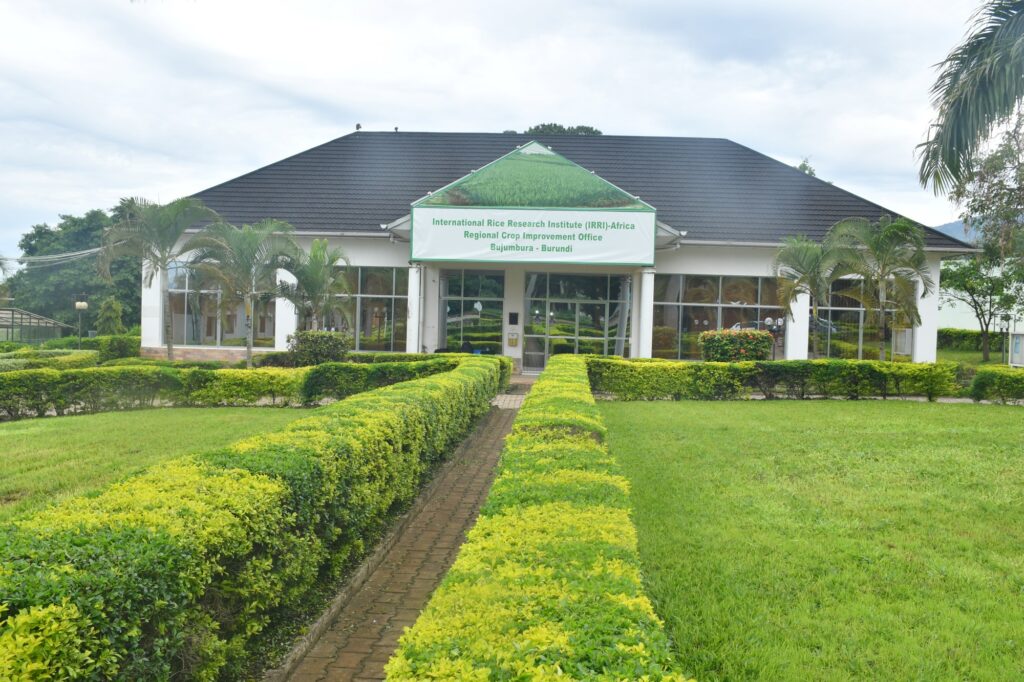
Why Rice Matters for Africa’s Food Security
Rice consumption in Africa is growing at an annual rate of about 5.5%, outpacing other cereals. However, only 60% of this demand is met by domestic production (Yuan et al., 2024)1. Burundi is an important rice producer in East Africa, covering 190,641 ha and an annual production increase of 7.6%, after Tanzania (1,390,000 ha, 4.7% annual production growth) and Mozambique (296,919 ha, 0.9% annual production increase). In East and Southern Africa (ESA), rice production is constrained by biotic stresses (such as blast, sheath rot, bacterial leaf blight, and rice yellow mottle virus), abiotic stresses (drought, cold, salinity), and climate change. These challenges necessitate innovative solutions, which the Regional Crop Improvement Hub has been uniquely positioned to provide for the past 12 years. It is therefore a perfect moment to reflect on and highlight some of the key achievements of the Regional Crop Improvement Hub. The impact assessment draws on quantitative data and narrative highlights.
Breeding for Climate Resilience and Grain Quality
The breeding section of the Regional Crop Improvement Hub has made significant strides in developing climate-resilient and high-yielding rice varieties. Through the Supa Improvement Program, the hub has enhanced local mega varieties with traits such as drought tolerance, disease resistance, and improved grain quality. Over 4,000 breeding lines have been shared with AfricaRice and national partners in Africa since 2013, resulting in the release of 35 varieties across multiple African countries.
The hubs’ adoption of Rapid Generation Advancement (RGA) and Single Seed Descent (SSD) techniques in 2016, has accelerated the development of new varieties through increases in speed of line fixation, allowing up to three and a half generations per year. When comparing directly, the documented cycles before and after the introduction of RGA and SSD, this acceleration translates into 30-40% reduction in time-to-release compared with conventional pedigree breeding.

Genotyping efforts have identified key effective QTLs/genes for drought tolerance (DTY3.1, DTY12.1), blast resistance (Pi-ta, Pi9). The introgression of drought tolerance and blast-resistance genes has reduced crop failure rates from baseline reports of 30% (Ndikuryayo et al., 2023)2 to approximately 10% considering that drought-tolerance gave an average yield advantage of 1.2t/ha under water stress trials and reduced disease severity scores from 8-9 (susceptible) to 2-3 (resistant), which in turn increased yields by about 1.5 t/ha. Furthermore, genotyping also identified genes for grain quality (BADH2 for aroma, Chalk5 for chalkiness).
The newly released varieties carry a baseline yield advantage of 1.5 – 2.0t/ha over the locally adapted checks, according to the multi-location trials. When combined with good agricultural practices (GAP), an average farmer-field yield increase of about 2t/ha was observed. This translates roughly to a 25% increase in productivity.
The Regional Crop Improvement Hub also produces about 4500t of breeder seed per year, which is distributed to national seed agencies. This ensures high-quality, pure seeds are available to the national system. These innovations directly contribute to food security by ensuring stable yields under stress conditions and addressing consumer preferences.
Combatting Rice Diseases Across Borders – Disease Management and Pathogen Surveillance
The plant pathology section plays an integral role in identifying and managing rice diseases that threaten yields across the whole region. The hub has mapped disease hotspots in Burundi, Kenya, Tanzania, and Mozambique, and characterized pathogens such as Pyricularia oryzae (blast), Xanthomonas oryzae (BLB), and rice yellow mottle virus (RYMV) strains. Furthermore, the hub has sequenced about 500 Pyricularia oryzae isolates, 400 bacterial isolates (Xoo, Xoc, Pantoea spp.), and about 450 RYMV samples.
The creation of the Crop Protection Community of Practices in Sub-Saharan Africa (CPCoP–SSA), comprising 26 countries and 35 institutions, enabled the Regional Crop Improvement Hub to perform regional disease surveillance, training, and resistance gene deployment. This network enhances regional capacity to respond to emerging threats and ensures coordinated action against transboundary pests and diseases.
The impact is multifaceted and includes early warning capabilities. Through molecular diagnostics, for example, SNP-based assays, nanopore sequencing, same-day detection is now enabled, reducing response lag from months to weeks. This is particularly important in the changing climate where diseases are transmitted faster. Furthermore, field trials demonstrate that varieties that carry stacked resistance genes suffer less than 5% yield loss compared to more than 30% loss in susceptible checks.
Moving forward, the hub will deploy portable Loop-Mediated Isothermal Amplification (LAMP) and CRISPR-Cas platforms for field-level detection of BLB, RYMV, and new emergent pathogens. Furthermore, the continuation of sequencing all isolates collected over the next five years will increase the pathogen database considerably, enabling real-time phylogenetic tracking. By developing a regional training center, the hub aims to deliver annual workshops and certification programs, further highlighting its unique position within the region.
Agronomy and Mechanization: Bridging the Yield Gap
Agronomic innovations have transformed rice farming practices, particularly in marshlands and lowland ecologies across the region. Through Farmer Field Schools (FFS), over 60,000 farmers, of whom 55% are women, have been trained in Good Agricultural Practices (GAP), resulting in an average yield increase of 2 tons per hectare.
Modern mechanization tools such as hand tractors, threshers, and grain dryers have replaced traditional labor-intensive methods, reducing manual labor hours by about 30%/ha and postharvest losses, and improving rice quality. Trials on rice-based rotations (e.g., rice-tomato-rice) have demonstrated significant gains in yield and income, offering scalable models for sustainable intensification.
Optimized fertilizer regimes, such as split nitrogen-phosphorus-potassium (NPK) applications, reduced input costs by approximately 12% while maintaining yields, and improved profitability for resource-poor smallholder farmers. To improve resilience further, trials on intermittent irrigation, organic amendment integration, and crop rotation will be further scaled.
To improve access to mechanization, the hub will partner with micro-finance institutions to develop leasing models for smallholder acquisition of equipment. The hub also envisions building and piloting a mobile-app or digital platform for real-time agronomic advice, linking farmer field school graduates with extension officers.
Training and Capacity Building: Investing in Human Capital
The Regional Crop Improvement Hub’s training section has become a cornerstone for building agricultural capacity in the region. Since 2013, the hub has supported three PhD and seven MSc students, hosted 233 interns, and trained 369 researchers and technicians through non-degree programs. These efforts ensure a pipeline of skilled professionals for the CGIAR, IRRI, and national institutions, equipped to tackle food security challenges.
Experience exchange visits between Burundi and the Democratic Republic of Congo (DRC) have fostered cross-border learning and collaboration. The hub’s ambition to evolve into a Continental Training Center, available to diverse institutions, including national research institutions, advanced research institutes, and non-governmental institutions, underscores the commitment to regional knowledge dissemination.
Corporate Services for Enabling Operational Excellence
Behind the scenes, the Regional Crop Improvement Hub’s corporate services, finance, human resources, procurement, and logistics have enabled the smooth implementation of research and training activities. Strategic partnerships with donors such as the World Bank, African Development Bank (AfDB), former USAID, and philanthropic entities have mobilized substantial resources for rice development. IRRI-Burundi, together with the national research institutions, identified funding opportunities through a strategic partnership with the Government of Burundi, represented by the Ministry of Environment, Agriculture, and Livestock.
Currently, infrastructure investments of the IRRI Regional Crop Improvement Hub include laboratories, greenhouses, disease screening facilities, and mechanization equipment. These assets support research and enhance the hub’s capacity to serve as a regional innovation platform.
2025–2030 Work Plan: Scaling Impact Across Africa
Looking ahead, IRRI Burundi’s 2025–2030 work plan outlines ambitious goals to deepen its impact on regional food security:
- Breeding: Deployment of improved Supa lines in ESA countries, introgression of effective resistance genes/QTLs into ESA-released Mega varieties, and breeding for cold tolerance in highland ecologies.
- Pathology: Sequencing of 1,350 pathogen isolates, genotyping of 60 elite lines, popularizing effective integrated disease and pest management techniques, and expansion of CPCoP–SSA activities.
- Agronomy: Validation of resilient practices (e.g., AWD irrigation), reduction of yield gaps, and promotion of mechanization technologies.
- Training: Development of new training modules, capacity building for 450 stakeholders, and establishment of a regional training center.
- Corporate Services: Efficient fund management, policy updates, and infrastructure maintenance to support research excellence.
Conclusion: Burundi, leading the way in Agricultural Innovation
The IRRI Regional Crop Improvement Hub has already delivered measurable gains in rice productivity, disease resilience, farmer capacity, and regional collaboration. This exemplifies how strategic investment in agricultural research, capacity building, and regional collaboration can transform food systems in Eastern Africa. By addressing the multifaceted challenges of rice production, from breeding and disease management to agronomy and training, the hub contributes not only to national food security but also to the resilience and prosperity of the entire ESA region and positions it to generate substantial, scalable impact over the next five years. Continued investment in data integration, gender-responsive monitoring, and mechanisms that broaden access to mechanization and climate-smart inputs will amplify these gains.
As climate change, population growth, and market demands intensify, the hub’s integrated approach offers a replicable model for other countries seeking to enhance their agricultural productivity and sustainability. Burundi’s leadership in rice innovation is a testament to the power of science, partnerships, and vision in securing Africa’s food future.
References:
FAO. (2023). Crop Prospects and Food Situation Nr.1, March 2023 (978-92-5-137698-0).
1Yuan, S., Saito, K., van Oort, P. A., van Ittersum, M. K., Peng, S., & Grassini, P. (2024). Intensifying rice production to reduce imports and land conversion in Africa. Nature communications, 15(1), 835.
2Ndikuryayo, C., Ndayiragije, A., Kilasi, N. L., & Kusolwa, P. (2023). Identification of drought tolerant rice (Oryza Sativa L.) genotypes with Asian and African backgrounds. Plants, 12(4), 922.

